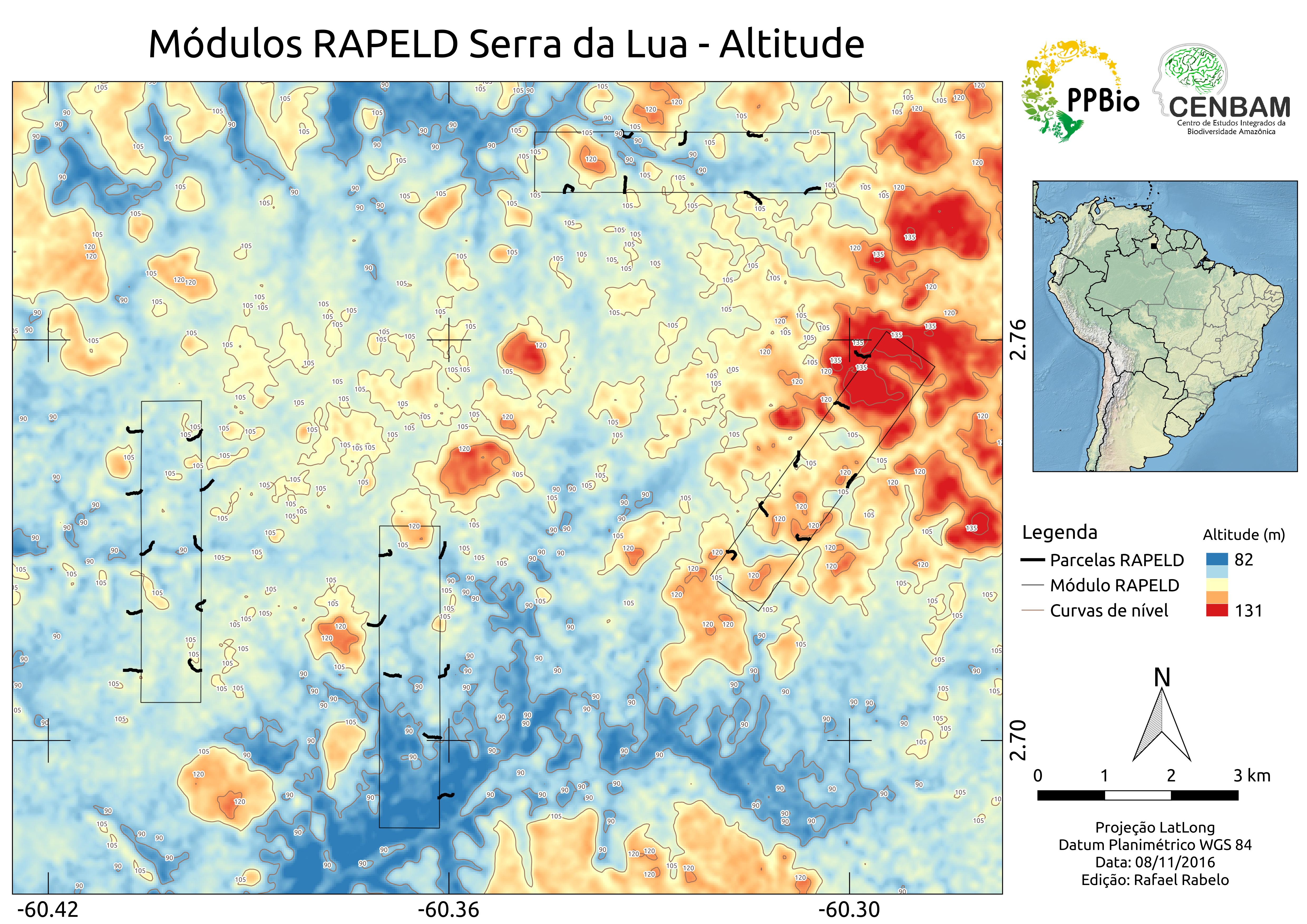Languages
Serra da Lua: Modules in Acácia plantations in Roraima.
In Roraima, in the extreme north of the Amazon, there are about 30 thousand hectares planted with Acacia mangium Willd, in areas formerly covered by savannas (os "lavrados" - the "plowed"). This is a unique condition in Brazil, which has 9.6% (623,420 hectares) of the total number of planted forests in the Legal Amazon, but mostly in Eucalyptus planted in areas formerly occupied by native forests in Pará and Amapá. Proposals for a National Policy on Planted Forests plan to double the area planted in the country over the next 10 years. The expectation is a stimulus for the conversion of degraded areas and pastures of low productivity in forest plantations.
The increase of forest plantations in the Amazon requires the assessment of the conservation value for biodiversity and ecosystem services (such as nutrient cycling, storage and carbon sequestration) in these environments in order to predict future scenarios and to subsidize public policies. In order to meet this demand for information in Roraima, a partnership was signed between F.I.T. And the State University of Roraima (UERR), Embrapa Roraima and Federal University of Roraima (UFRR) to start an integrated environmental monitoring program, including several elements of the landscape. The design adopted follows the RAPELD methodology and included the installation of four modules (two parallel tracks of 5 km separated by 1 km) and 40 permanent plots distributed in six farms in the region known as Serra da Lua, municipality of Bonfim, Roraima, 55kms from Boa Vista along the RR-207 highway.
The modules were installed in a mosaic of A. mangium plantations of six different ages (plantations from 2000 to 2006), remnants of plowing, semideciduous seasonal forest and gallery forest, comprising an area of approximately 190 km2. The climate of the region is tropical with a dry period from December to March and a rainy season from April to August. Rainfall is between 1600 and 1700 mm annually and the temperatures vary between 27 to 28 ° C. Soft hills give undulating shapes to the relief. Soils are very variable in texture, but are often poor in nutrients.
It is hoped that the new research site will be used for integrated studies and monitoring to answer several ecological questions of importance for the management and conservation of biodiversity and ecosystem services in the region. The understanding of how man-made landscapes can maintain local biodiversity represents one of today's great challenges in applied ecology.

Fonte: F.I.T. Manejo Florestal do Brasil Ltda. Clique aqui para ver o mapa em maior resolução.

Metadata
Guidelines to facilitate searching the repository: on the search page of the link above, type the keyword: Serra da Lua
Contact:
José Julio de Toledo (jjuliotoledo@gmail.com)
Universidade Federal do Amapá – Macapá - AP
Telefones: (96) 3312 1757; (96) 8146 9049
Carolina Volkmer de Castilho (carolina.castilho@embrapa.br)
Embrapa Roraima, Boa Vista – RR
Sidney Araújo de Sousa (sidneyguara@gmail.com)
Universidade Federal de Roraima
Wesley Gonçalves de Souza (wesley@fit-mf-br.com)
F.I.T. Manejo Florestal do Brasil Ltda.
(95) 3212-3300
Eder Alves de Oliveira (eder@fit-mf-br.com)
F.I.T. Manejo Florestal do Brasil Ltda.
(95) 3212-3300

